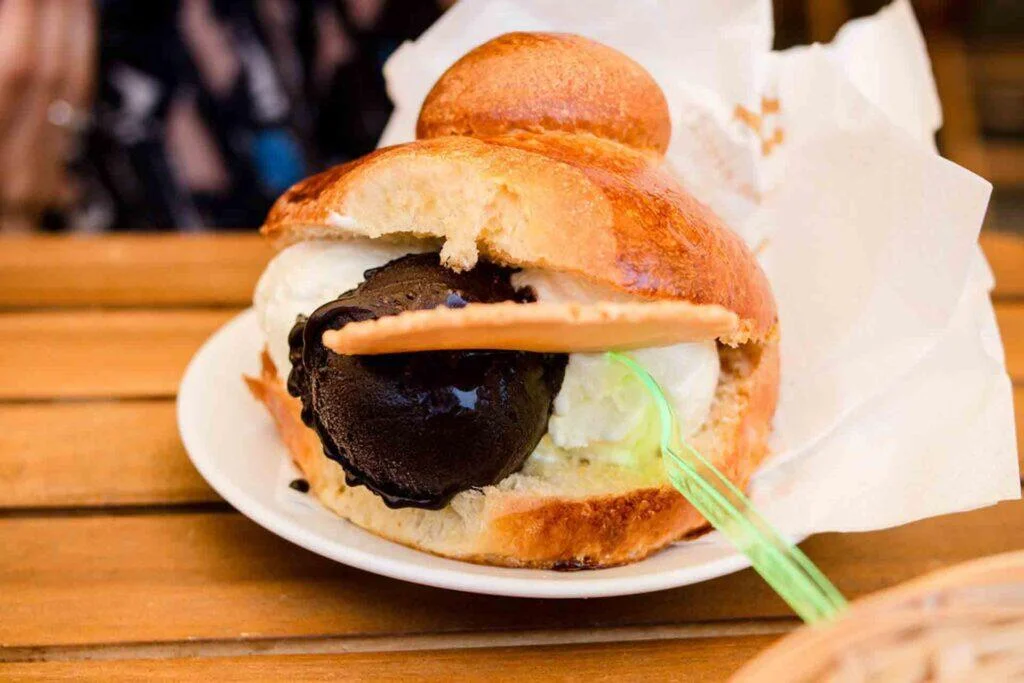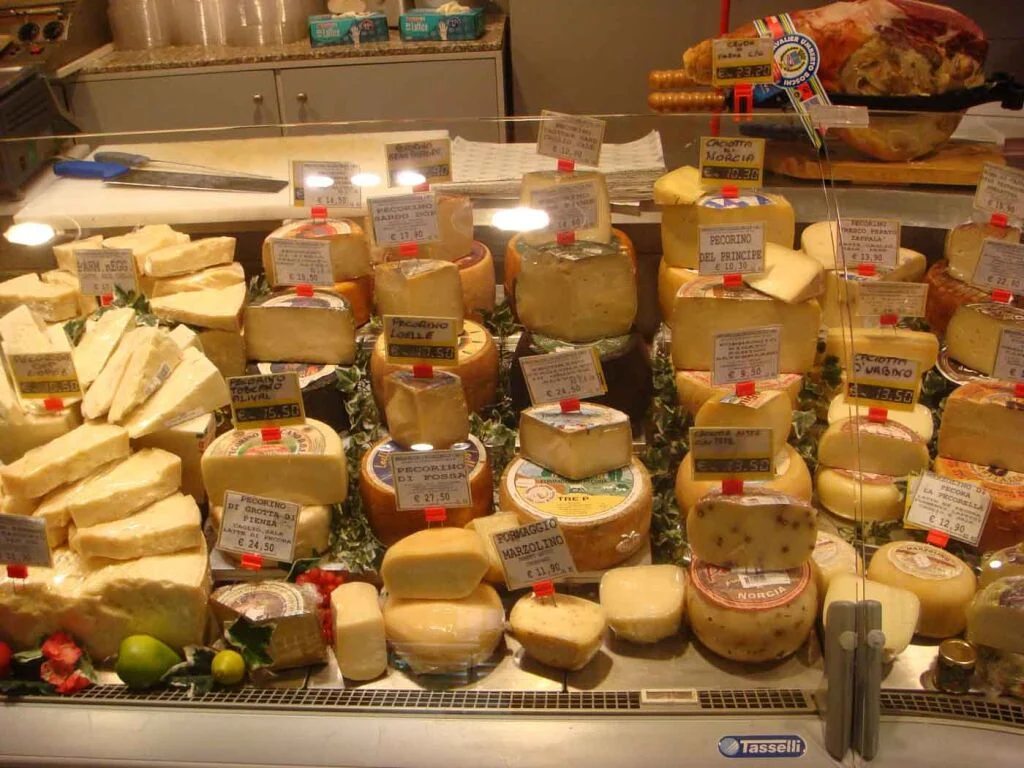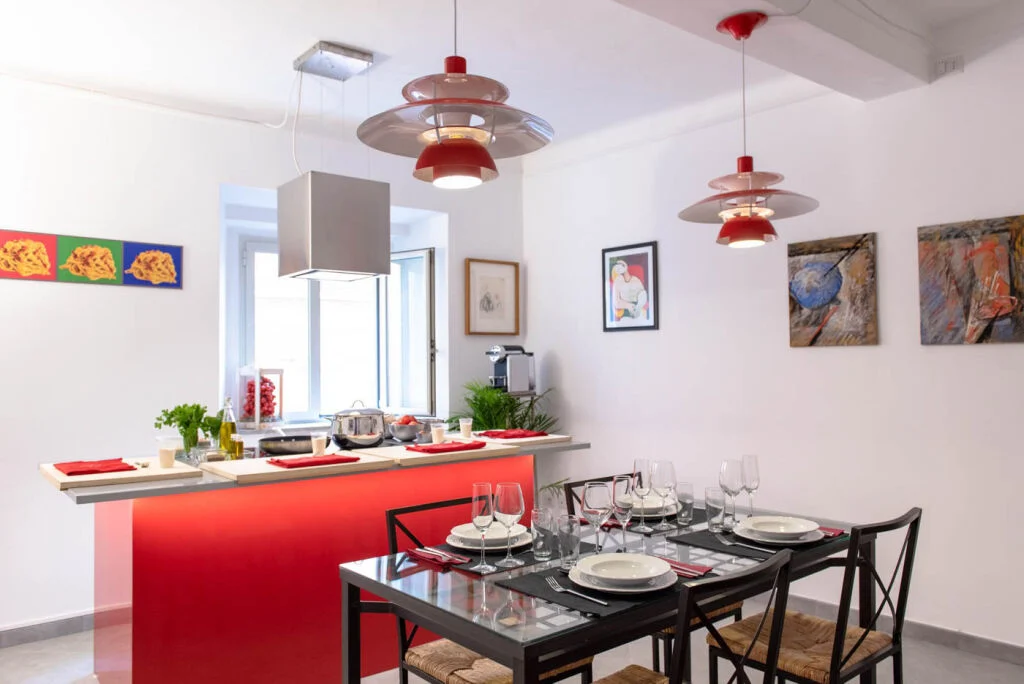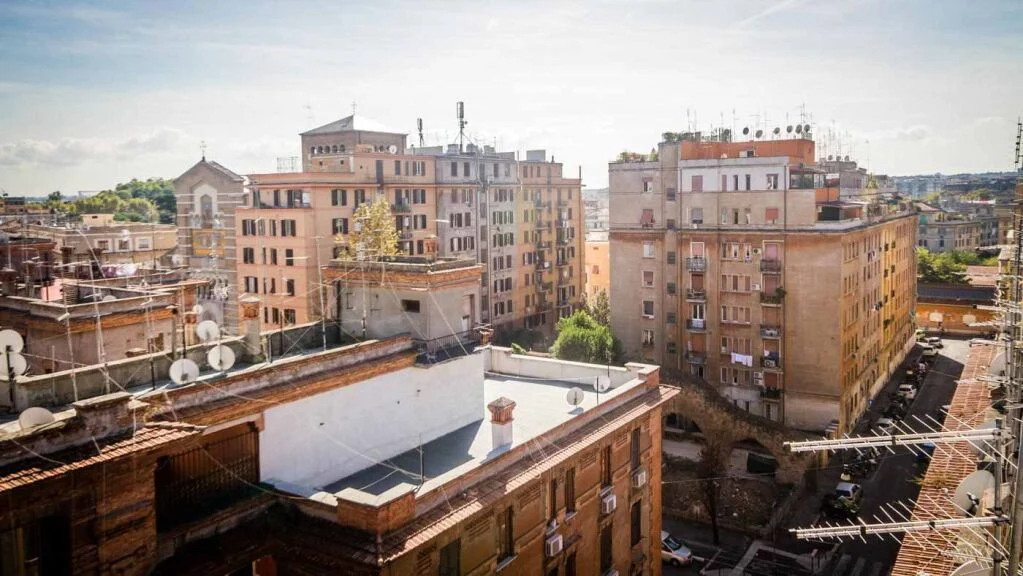Sicily’s storied history has seen it under the control of Greek, Arab, Norman, and Roman forces, all of which have left their mark on the island’s cuisine, including Sicilian desserts.
Italy has a reputation for having some of the finest sweet treats on the planet. However, as you’ll know if you’ve been on one of my Palermo food tours, Sicilians do things a little differently, utilizing ingredients like citrus fruits and pistachios to create quirky but delectable sweets.
The next time you find yourself vacationing in the enchanting city of Palermo, be sure to sample some of these mouthwatering Sicilian desserts.
Iconic Sicilian Desserts You Must Try
Cannoli
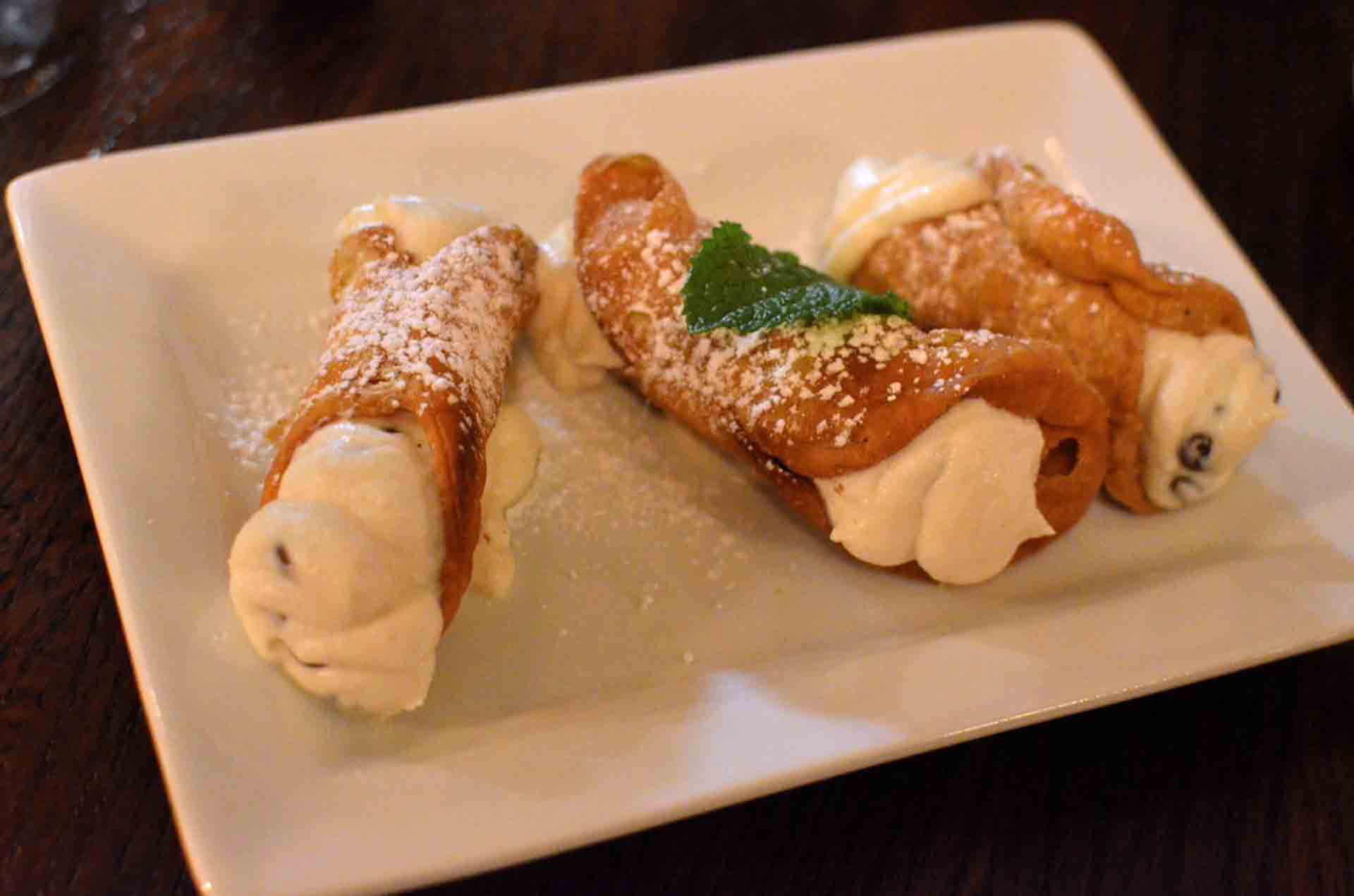
Cannoli are easily the most famous Sicilian desserts. They consist of sweetened ricotta stuffed inside fried, tube-shaped pastry and are often teamed with toppings like nuts or chocolate chips.
These snacks have a rather unusual backstory. Some say the concubines of an Arab emir crafted them in the 9th century, though they later became a celebratory treat prepared by nuns several centuries later.
Where to Eat It?
Dolce Capo is the go-to spot in Palermo for cannoli, and this pint-sized Mediterranean joint always delivers. The classic cannolo with creamy ricotta, crunchy pastry, and a hint of citrus is a favorite of mine.
Dolce Capo (€) – Via dei Candelai, 95/97, 90134 Palermo PA, Italy.
Granita con Brioche
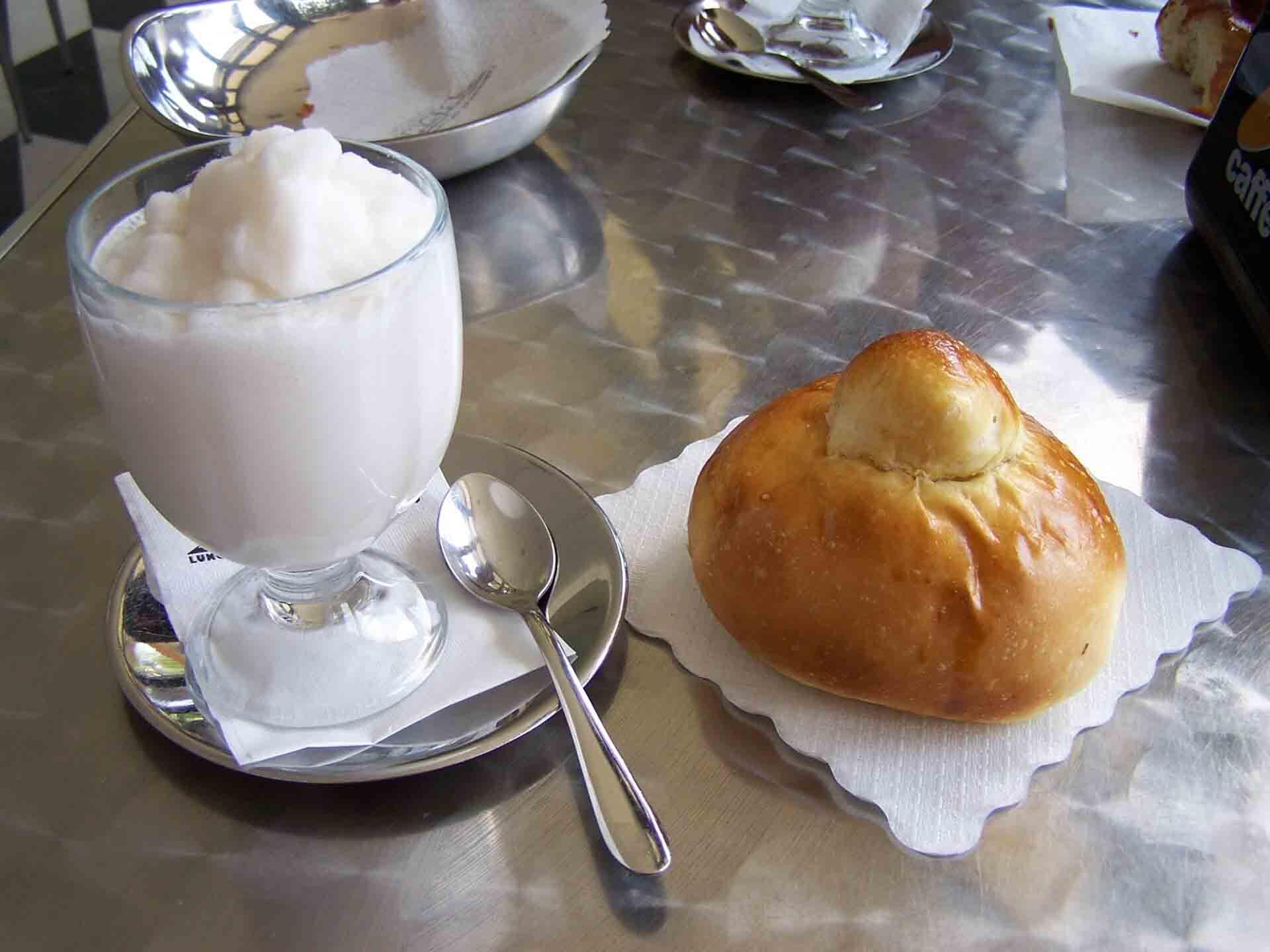
What could be a better match for granita, a refreshing, semi-frozen mix of sugar, water, and fruit, than rich, fluffy brioche? These two contrasting components come together to make an iconic Sicilian dessert and breakfast.
There’s some dispute about the origins of this dish, with some attributing the brioche to a chef for a noble family in eastern Sicily. Granita likely came about as a result of the Arab invasion in the 9th century, which brought sugar to the island.
Where to Eat It?
The compact and colorful Le Granite di Nonna Angelina boasts some sensational granita, and the grainy, tart pomegranate variety is top-notch. After each mouthful, I balanced the flavors with a bite of the buttery brioche.
Le Granite di Nonna Angelina (€) – Via Vittorio Emanuele, 393, 90134 Palermo PA, Italy.
Cassata
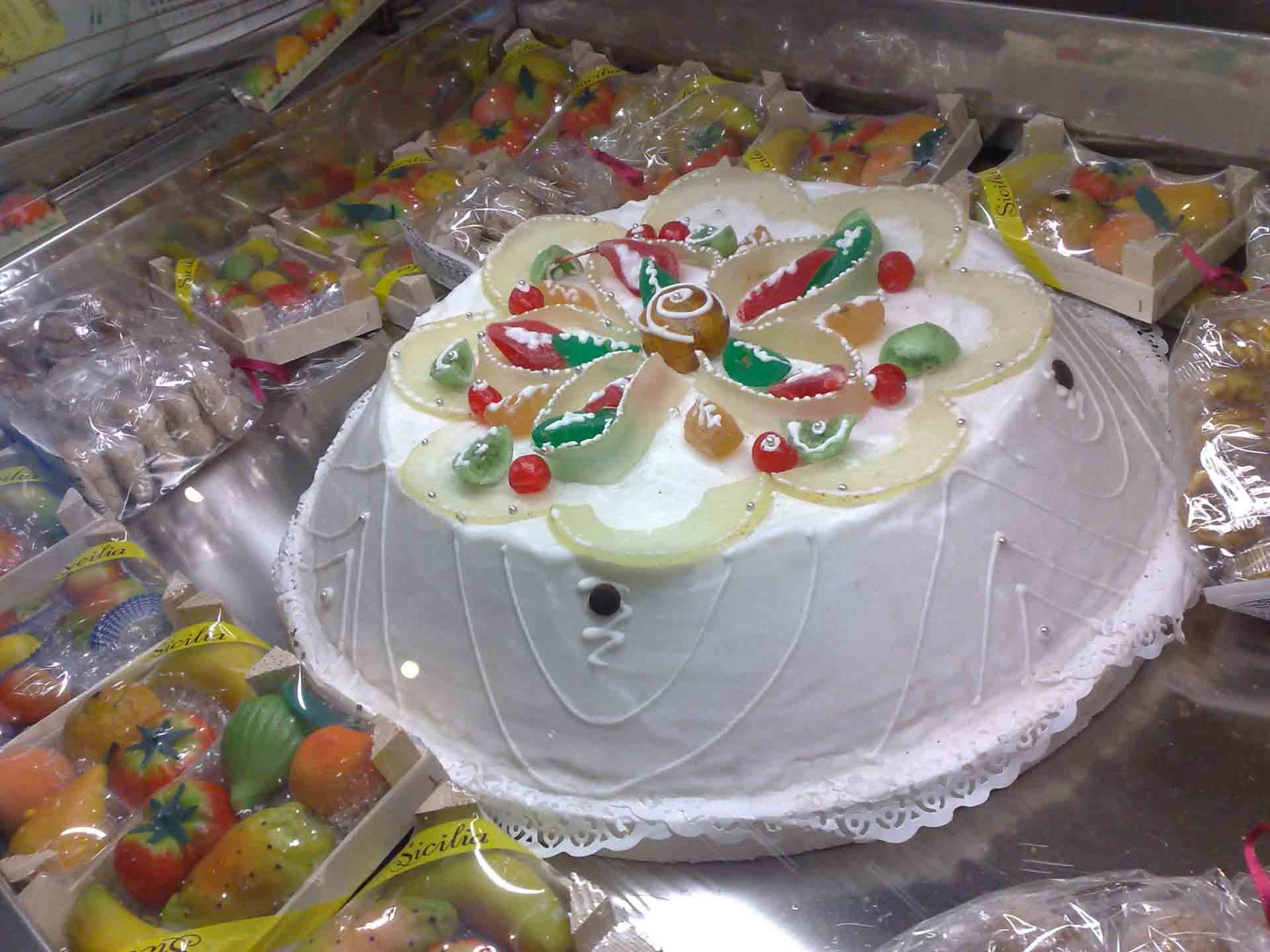
Cassata is a beloved cake made from sponge, ricotta, and candied fruits that combines decadent and bright flavors.
Like many other Sicilian desserts, cassata is thought to have Arab roots. Many of the key ingredients, like sugar and citrus fruits, were brought to the island around the 9th century.
Where to Eat It?
I Segreti del Chiostro is a famed pastry shop tucked inside the grounds of a centuries-old monastery. I’ve yet to find cassata that can top this place as the lightweight sponge, zesty orange and lemon notes, and thick ricotta come together seamlessly.
I Segreti del Chiostro (€) – Piazza Bellini, 33, 90133 Palermo PA, Italy.
Sfincia di San Giuseppe
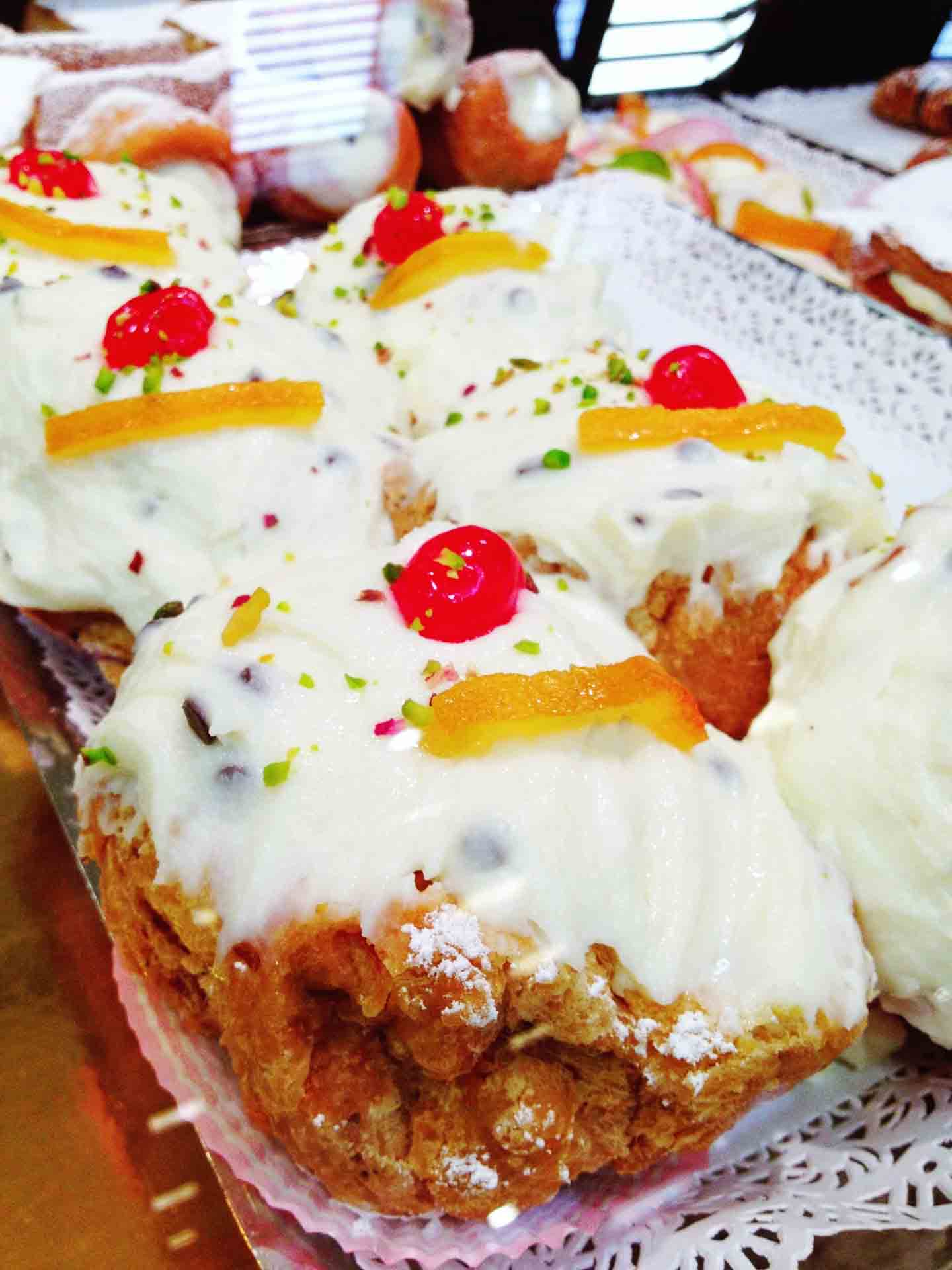
Sfincia di San Giuseppe is another Sicilian dessert that makes the most of ricotta and fruits, adding them to a helping of deep-fried pastry sprinkled with chocolate chips.
Although there’s no definitive story behind sfincia di San Giuseppe, it was prepared in monasteries in Palermo for centuries. It was traditionally made on Father’s Day, which aligns with the celebration of St. Joseph.
Where to Eat It?
Pasticceria Costa is an old-school, homely bakery that happens to make some superb sfincia di San Giuseppe. I was served a huge portion, yet I managed to finish every bite of soft, sugary pastry and slightly tangy, cherry-topped ricotta.
Pasticceria Costa (€) – Via Maqueda, 174, 90133 Palermo PA, Italy.
Pignolata
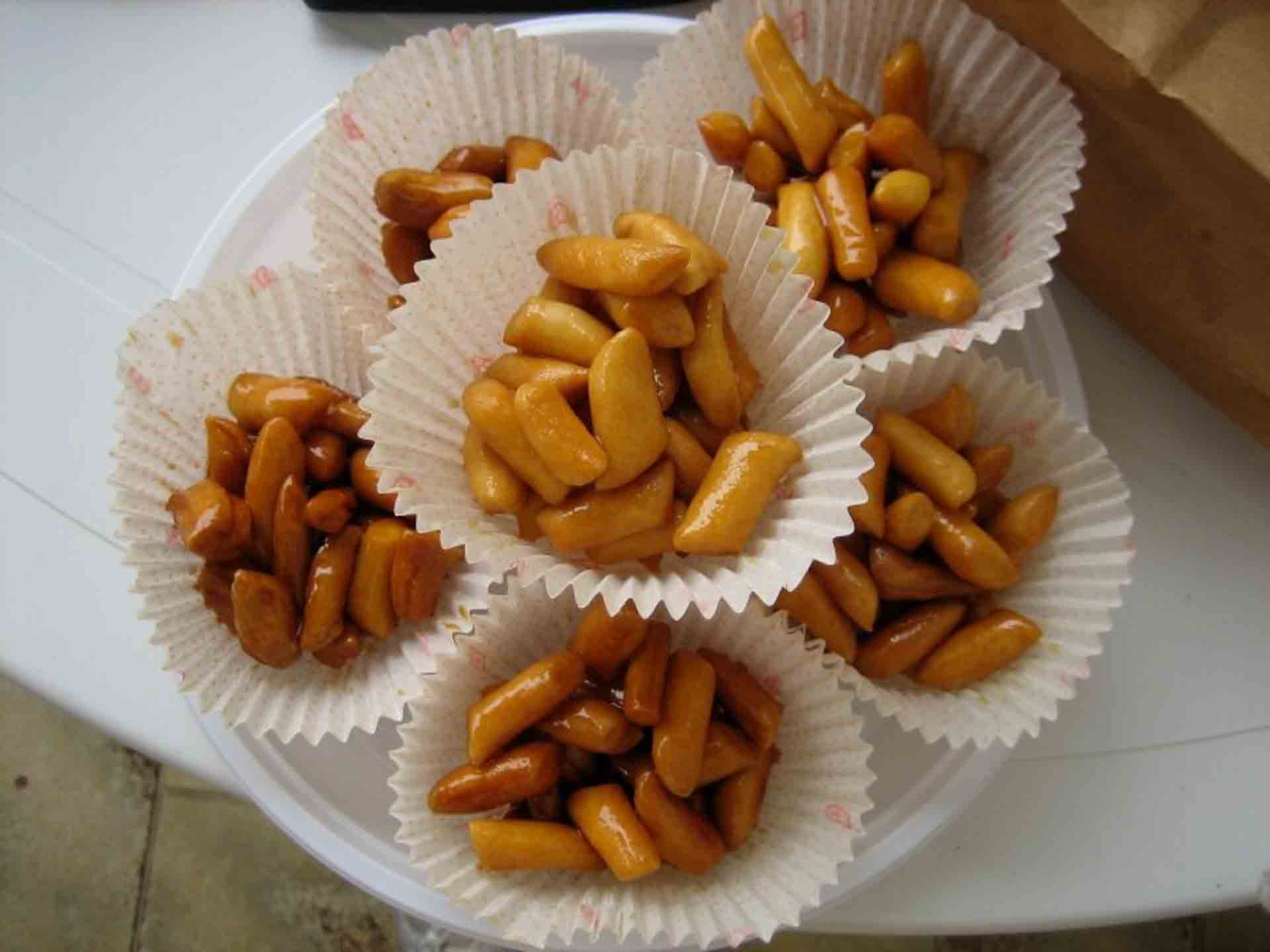
A Christmas and Carnival classic, pignolata is a Sicilian dessert consisting of fried dough balls, typically smothered in either chocolate or lemon syrup. In other recipes, they’re drenched in honey and sprinkles.
These pinecone-shaped morsels originated in the city of Messina several hundred years ago when locals used inexpensive ingredients to make sweet treats.
Where to Eat It?
One of Palermo’s most esteemed pastry shops, Pasticceria Cappello, is a stylish spot home to some exquisite pignolata. Each piece was firm on the outside with an airy interior, and I loved the contrast between the zingy lemon glaze and luxurious chocolate.
Pasticceria Cappello (€) – Via Colonna Rotta, 68, 90134 Palermo PA, Italy.
Brioche con Gelato
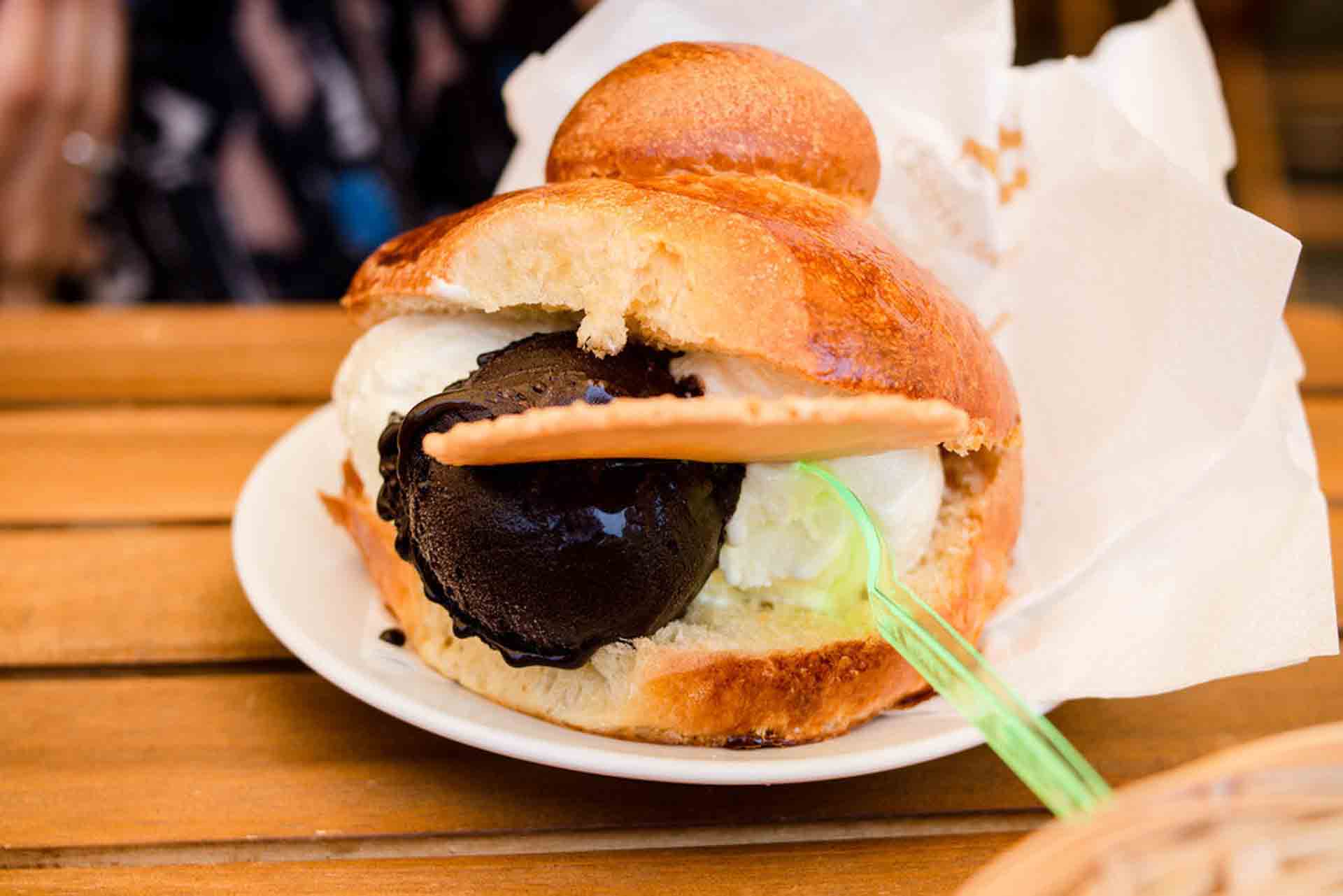
Brioche con gelato is the ultimate breakfast for those with a sweet palate, consisting of velvety ice cream stuffed inside pillowy bread.
It’s not clear when Sicilians began blending the two, but it’s been a popular snack in Palermo for some time now.
Where to Eat It?
The brioche con gelato in the bright and buzzing Gelateria Al Cassaro is heavenly. I went for the earthy pistachio gelato, and it melted into the doughy brioche to create a mouthwatering combination of flavors.
Gelateria Al Cassaro (€) – Via Vittorio Emanuele, 214, 90133 Palermo PA, Italy.
Paste di Mandorla
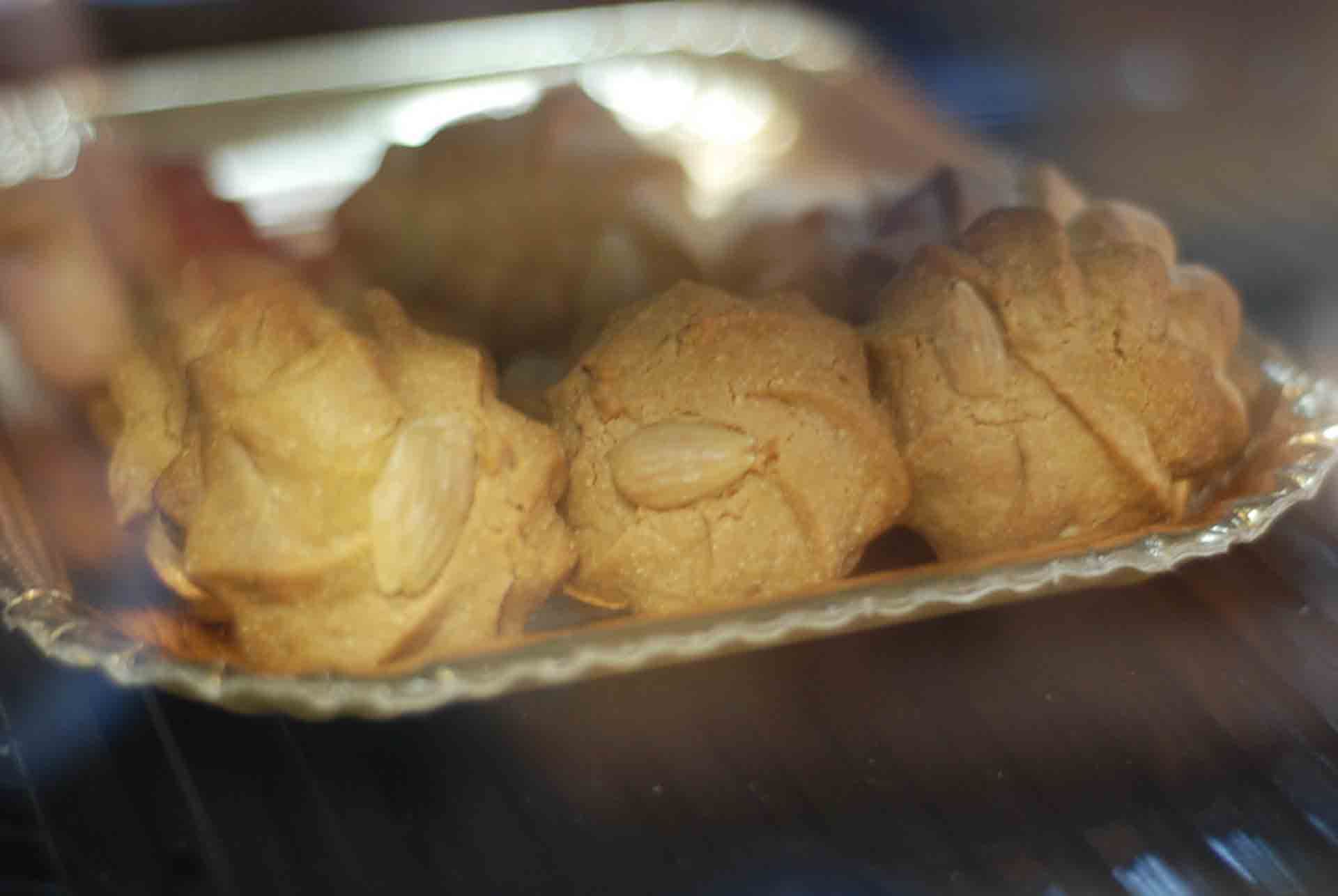
Paste di mandorla is Sicily’s answer to cookies, and are made from almond flour, ground almond, sugar, and egg whites.
These popular treats hail from Palermo’s Martorana convent and, like many Sicilian desserts, made the most of foods brought to the island by the Arabs.
Where to Eat It?
La Dolceria di Santa Caterina is an expansive traditional bakery, and it’s here that I tried paste di mandorla for the first time. They were slightly chewy with an almost gooey interior bursting with toasted almond notes and a saccharine finish.
La Dolceria di Santa Caterina (€) – Piazza Bellini, 90133 Palermo PA, Italy.
Frutta Martorana
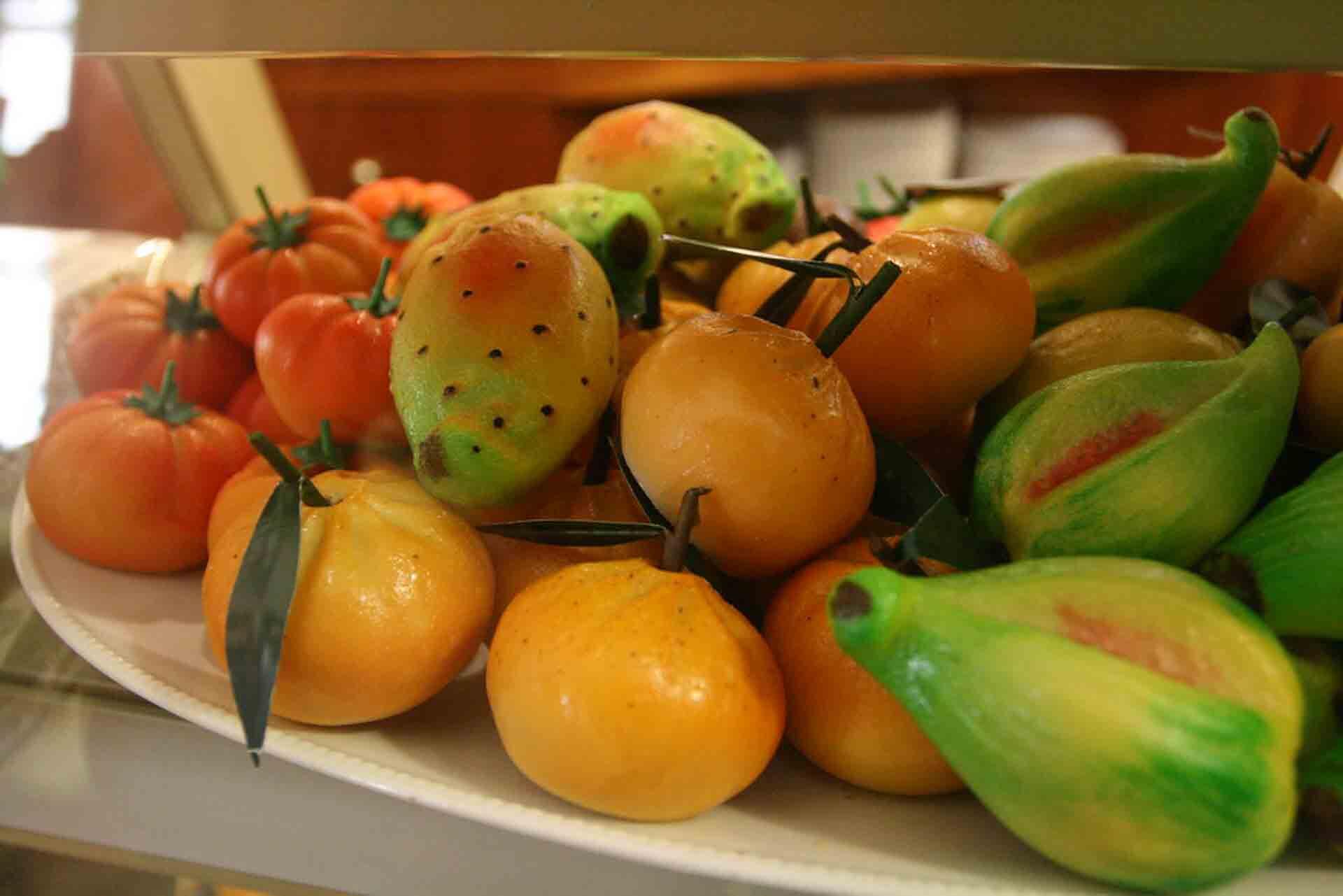
Although presented in the shape of various fruits, frutta Martorana are marzipan-based goodies.
They’re one of the many desserts that came from the Martorana convent, which was known for its vibrant fruit trees. Pope Clement V was due to visit during the fall when the trees were bare, so the nuns improvised and made fruit-shaped snacks instead!
Where to Eat It?
La Martorana is a chic pastry shop that’s just a short walk from the convent, so it’s no surprise the frutta Martorana are so good here. Although eye-catching, they’re also delicious, featuring a mix of sugary, nutty, and bitter flavors.
La Martorana (€) – Via Vittorio Emanuele, 194/196, 90133 Palermo PA, Italy.
Cioccolato di Modica
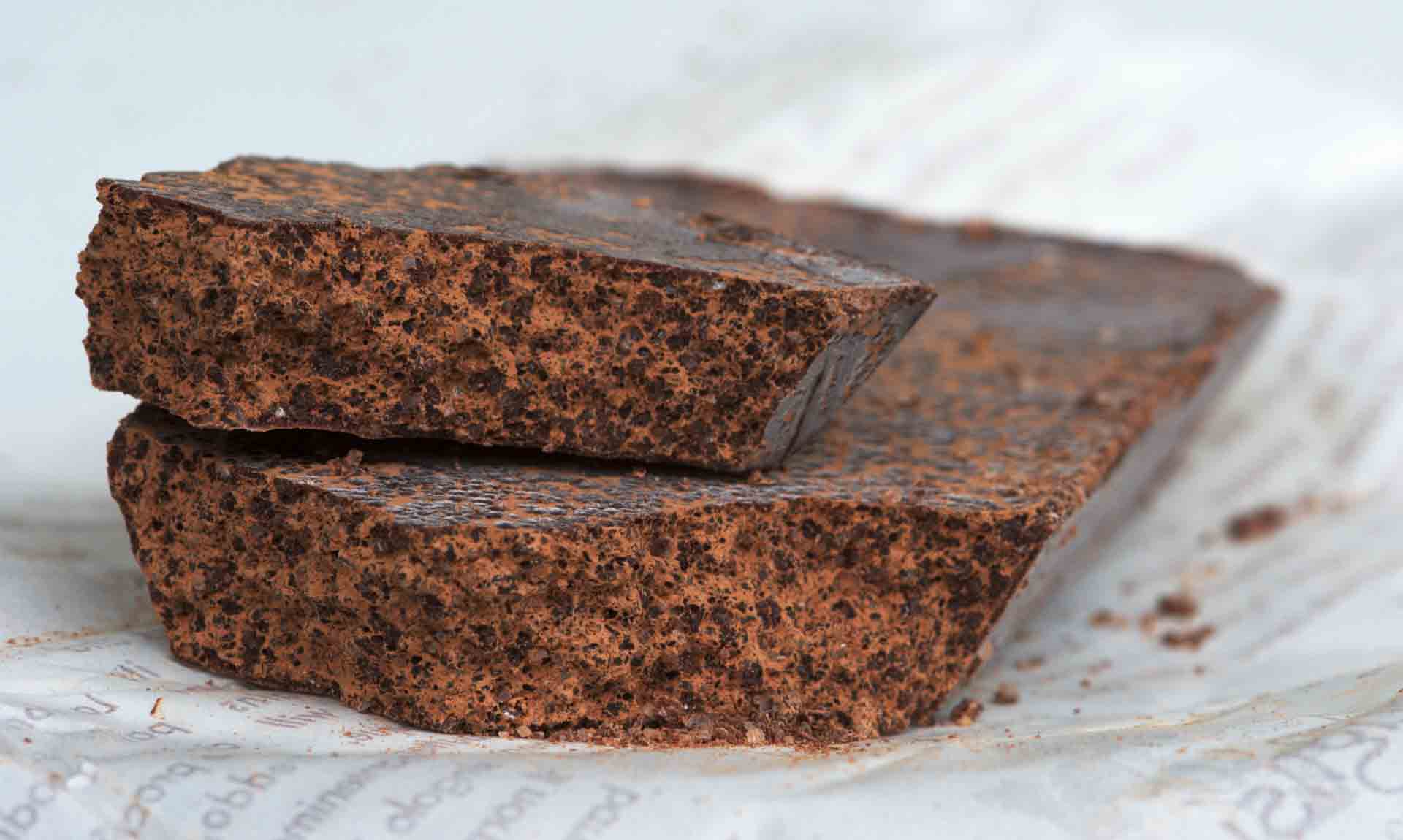
A grainy specialty chocolate from the town of Modica, cioccolato di Modica is a much-loved Sicilian product.
This form of chocolate came from Spanish influences. The Spaniards inspired locals to make it using just cocoa beans and sugar, a more traditional chocolate-making approach.
Where to Eat It?
Cioccolato di Modica can be tricky to come by outside of its birthplace in southeastern Sicily, but you’ll sometimes find it in select grocery stores or tourist shops.
Sicilian Desserts for Special Occasions: Weddings, Festivals, and Celebrations
Sicilian desserts are about more than just satisfying a sweet tooth. Pretty much every celebratory event or special occasion has its own signature treat. That said, you can still enjoy many of these desserts at any time of year, but they tend to be easier to find during the relevant festivities!
For instance, cassata has long been an Easter specialty. Its indulgent flavors and textures were seen as the perfect dish with which to break the Lenten fast. Similarly, cannoli were believed to be a symbol of fertility and fortune and, as such, they’re often key features of Sicilian weddings.
Both are now synonymous with celebrations, and it’s common to see either served at any type of get-together, along with a host of other desserts. On the other hand, some confections, such as the delightful almond milk pudding known as biancomangiare, are more of an everyday snack.
Conclusion
Some of Sicily’s sweetest creations, like cannoli and granita, are well-known on the international stage. Yet, these are just two of the many incredible Sicilian desserts out there that showcase the island’s knack for crafting unique confections!
Sources:
Eating Europe. (n.d.). Palermo food tours & experiences. Eating Europe. https://www.eatingeurope.com/palermo/
I Segreti del Chiostro. (n.d.). I segreti del chiostro – Traditional Sicilian sweets. I Segreti del Chiostro. https://isegretidelchiostro.shop/
Pasticceria Costa. (n.d.). Pasticceria Costa – Sicilian pastries and cakes. Pasticceria Costa. https://www.pasticceriacosta.com/
Pasticceria Cappello. (n.d.). Pasticceria Cappello – Traditional Sicilian sweets & cakes. Pasticceria Cappello. https://www.pasticceriacappello.it/
Al Cassaro Gelateria. (n.d.). Al Cassaro Gelateria. Al Cassaro Gelateria. https://www.alcassarogelateria.it/
Monastero Santa Caterina. (n.d.). Dolceria del Monastero Santa Caterina. Monastero Santa Caterina. https://www.monasterosantacaterina.com/dolceria
Tripadvisor. (n.d.). Dolce Capo restaurant review. Tripadvisor. https://www.tripadvisor.com/Restaurant_Review-g187890-d23392045-Reviews-Dolce_Capo-Palermo_Province_of_Palermo_Sicily.html
Tripadvisor. (n.d.). Le Granite Di Nonna Angelina restaurant review. Tripadvisor. https://www.tripadvisor.co.uk/Restaurant_Review-g187890-d21257965-Reviews-Le_Granite_Di_Nonna_Angelina-Palermo_Province_of_Palermo_Sicily.html
Tripadvisor. (n.d.). La Martorana restaurant review. Tripadvisor. https://www.tripadvisor.co.uk/Restaurant_Review-g187890-d24050262-Reviews-La_Martorana-Palermo_Province_of_Palermo_Sicily.html

